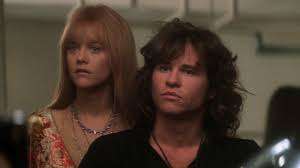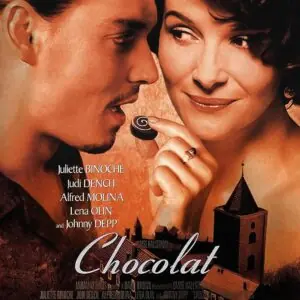Introduction
Oliver Stone’s The Doors (1991) is a fever-dream biopic of Jim Morrison (Val Kilmer), the iconic frontman of The Doors, blending electrifying concert scenes with the singer’s chaotic descent into hedonism and self-destruction.
While visually stunning and anchored by Kilmer’s transformative performance, the film has sparked debate for decades—does it glorify Morrison’s excess or critique it? This review explores its highs, lows, and legacy.
Plot & Structure

The film follows Morrison from his days as a UCLA film student to his rise as a rock god and eventual death in Paris at 27. Key moments:
-
Formation of The Doors – Ray Manzarek (Kyle MacLachlan) convinces Jim to start the band.
-
Breakthrough hits – “Light My Fire,” “The End,” and their controversial performances.
-
Spiral into excess – Alcohol, LSD, arrests, and strained relationships (especially with Pamela Courson, played by Meg Ryan).
-
Final days – Morrison’s exile in Paris and ambiguous death.
Stone uses nonlinear flashbacks, surreal visions, and shamanistic imagery to mirror Morrison’s fractured psyche.
What Works?

1. Val Kilmer’s Unreal Performance
Kilmer doesn’t just play Morrison—he channels him. From the baritone voice to the hypnotic stage presence, it’s one of cinema’s greatest musical impersonations. He even sang live on set.
2. The Concert Sequences
Stone recreates The Doors’ performances with raw energy, using swirling cameras and strobe lights to evoke the era’s psychedelic chaos.
3. The Soundtrack
The Doors’ music is used perfectly, with haunting renditions of:
-
“The End” (the infamous Oedipal section).
-
“Riders on the Storm” (playing over Morrison’s death scene).
4. Visual Poetry
Stone’s direction embraces myth-making, framing Morrison as a tortured poet more than a mere rockstar.
What Doesn’t Work?

1. Historical Inaccuracies
-
Exaggerated debauchery – Morrison was wild, but some scenes (like the Miami arrest) are dramatized.
-
Villainizing Pamela Courson – Meg Ryan’s character is reduced to a nagging girlfriend, unlike real-life Pamela’s complex role.
-
Band sidelining – Ray, Robby, and John are underdeveloped, making The Doors feel like “The Jim Show.”
2. Style Over Substance
The film fetishizes Morrison’s self-destruction without deeper analysis of his artistry or contradictions.
3. Pacing Issues
At 140 minutes, the second half drags as Morrison’s decline becomes repetitive.
The Morrison Myth: Genius or Madman?
Stone leans into the “Lizard King” legend, portraying Morrison as:
-
A shaman (Native American visions haunt him).
-
A rebel (battling censorship and authority).
-
A tragic icon (destroyed by his own myth).
But critics argue it glorifies his worst impulses without questioning the cost.
How Does It Compare to Other Music Biopics?
| Film | Strengths | Weaknesses |
|---|---|---|
| The Doors (1991) | Kilmer’s performance, visuals | Overly mythic, inaccurate |
| Bohemian Rhapsody (2018) | Crowd-pleasing, Rami Malek | Formulaic, sanitized |
| Rocketman (2019) | Emotional depth, musical fantasy | Less gritty |
| Walk the Line (2005) | Joaquin Phoenix, romance focus | Conventional structure |
Verdict: The Doors is more art than biography—flawed but unforgettable.
Final Rating: 7.5/10
Who Should Watch?
✅ Doors fans – Kilmer’s performance is worth it alone.
✅ Oliver Stone/’90s cinema lovers – Peak stylistic excess.
❌ Sticklers for accuracy – This is Morrison as legend, not man.
If You Liked This, Try:
-
Almost Famous (2000) – A sweeter take on rock ‘n’ roll.
-
Control (2007) – A grittier music biopic (Joy Division).
-
Fear and Loathing in Las Vegas (1998) – Another psychedelic descent.
Final Thought: The Doors is less about the truth of Morrison and more about the ecstasy and terror of burning too bright.
Would you like a deeper dive into the real Jim Morrison vs. Kilmer’s portrayal? Or analysis of the film’s impact on rock biopics?





